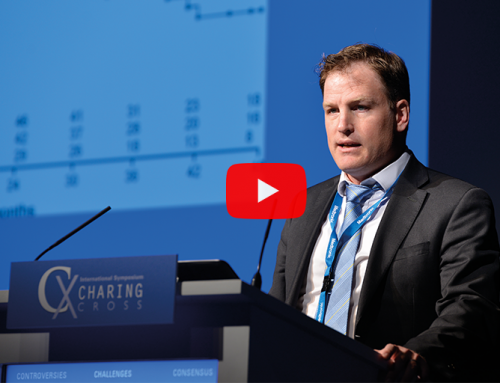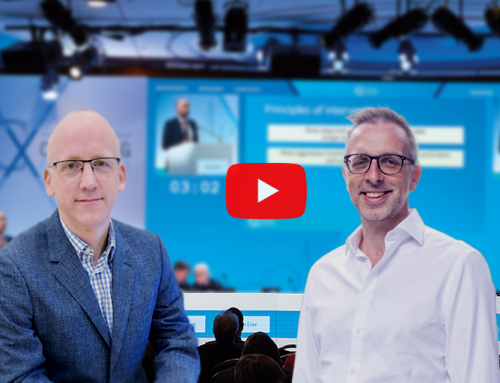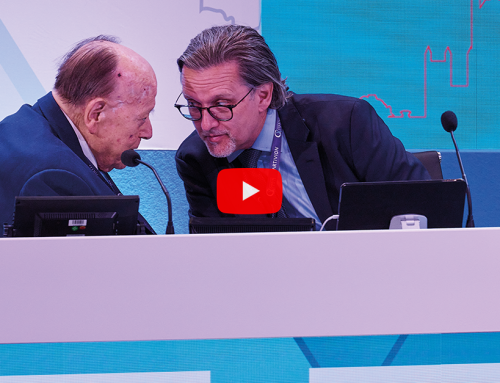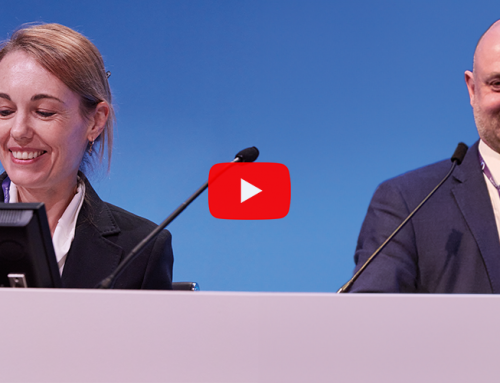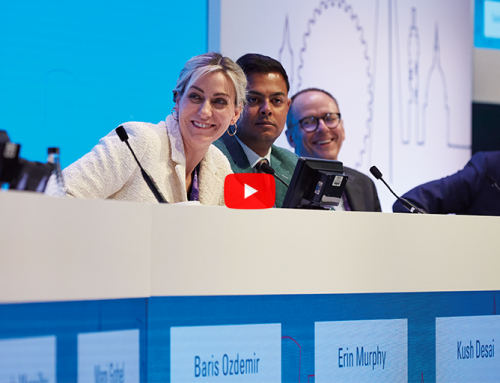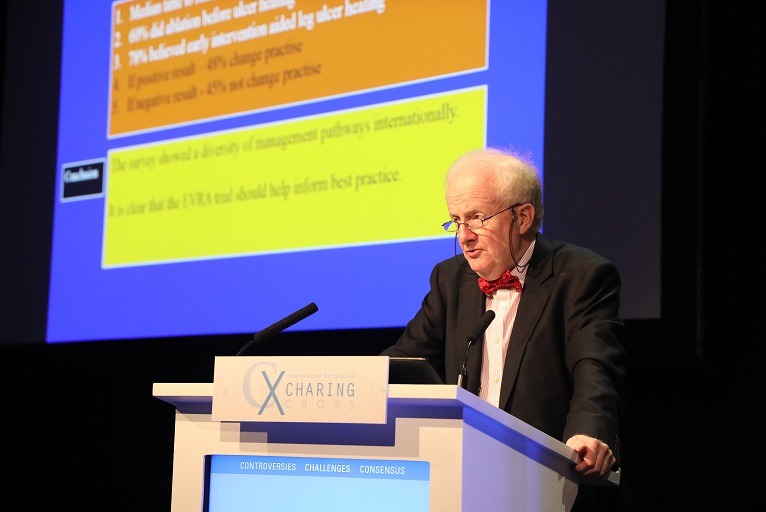
Alun Davies
Despite what current guidelines denote in addition to the emergence of data supporting the early intervention of venous ulceration, Alun Davies (London, UK) put forward that the recommendations are consistently being ignored, and highlighted that: “Urgent action is required to improve referral pathways between primary and secondary care for patients with venous ulceration.”
According to Davies, venous ulcers—that usually occur on the lower part of the leg—can be a major source of patient distress and social isolation, substantially impacting the patient’s quality of life. What remains less immediately apparent, however, is the burden of this condition on health services. Alluding to the fact that venous ulcers cost the UK National Health Service over £1 billion each year, Davies said that this figure is forecasted to increase, given the UK’s aging population and incidence of obesity.
Alongside this, Davies said that the EVRA (Early venous reflux ablation) trial was stimulated by the lack of translation of the UK National Institute for Health and Care Excellence (NICE) guideline into clinical practice. In July 2013, it was recommended that patients with a venous leg ulcer should be referred to a vascular specialised within two weeks. However, Davies surmised that: “It usually went ignored by healthcare professionals, be in nurses or primary practitioners.”
Results of the EVRA trial showed that the time to ulcer healing was shorter with early endovenous ablation, as the median time to ulcer healing was 56 days as opposed to 82 days for the deferred intervention group. Although Davies acknowledged that this finding supports the need for early intervention, he asked the CX audience: “Was it really an early intervention? I would suggest to you that it was probably not.” Referring to the fact that the mean time that patients had had their leg ulcer before the intervention was just over three months, Davies postulated: “If we treated these patients as if they ‘had cancer’ and referred them early, we could have had an even better response.”
However, Davies alluded to certain barriers preventing the optimal implementation of this intervention, including a lack of education, system failure, inadequate facilities and the perception of cost. Interestingly, he said that these barriers have led the UK Venous Forum to issue a guidance information leaflet that has so far been distributed to healthcare funding bodies and parliament, detailing a strategy of early referral, and the early assessment of patients with a venous leg ulcer.
Placing this early intervention into the context of a global pathway, Davies stated: “I see no reason why the diagnosis should not be made in the community. The compression should be started immediately provided [the physician] is happy that the arterial supply is adequate. Then there should be an urgent vascular assessment with a venous intervention in a standard patient. There should be no reason why this cannot be done at the same day as the diagnostic ultrasound.
“From diagnosis to treatment, we should be able to do it within two weeks. We can certainly do it with cancer and other diseases, so why shouldn’t we be able to do this with leg ulceration.”
Offering a direction in which to target this intervention, Davies emphasised: “We really need to get the message out to patients, who are often elderly patients, to let them know that there are good forms of treatment. So when they see their doctor, they say that they need to be referred to a specialist.”
Moreover, he highlighted the importance that politicians and payers buy into the process. Referring to the health economics of venous ulceration, Davies said: “We need to spend a significant amount of time convincing our politicians that it is a benefit to treat these patients early.”
“But what is also important”, he added, “is the need to educate public health doctors and nurses. We need our vascular colleagues to champion the fact that these patients need urgent intervention”.



